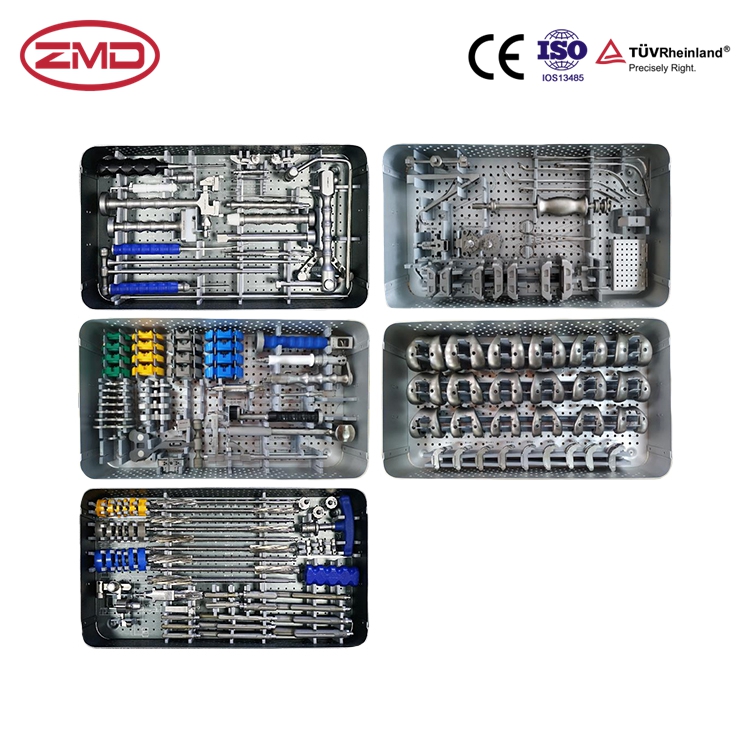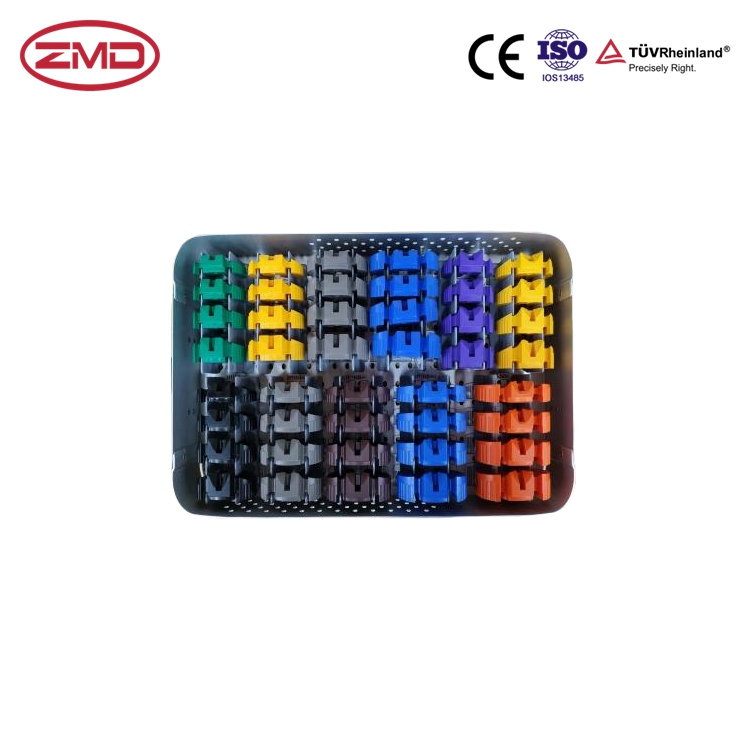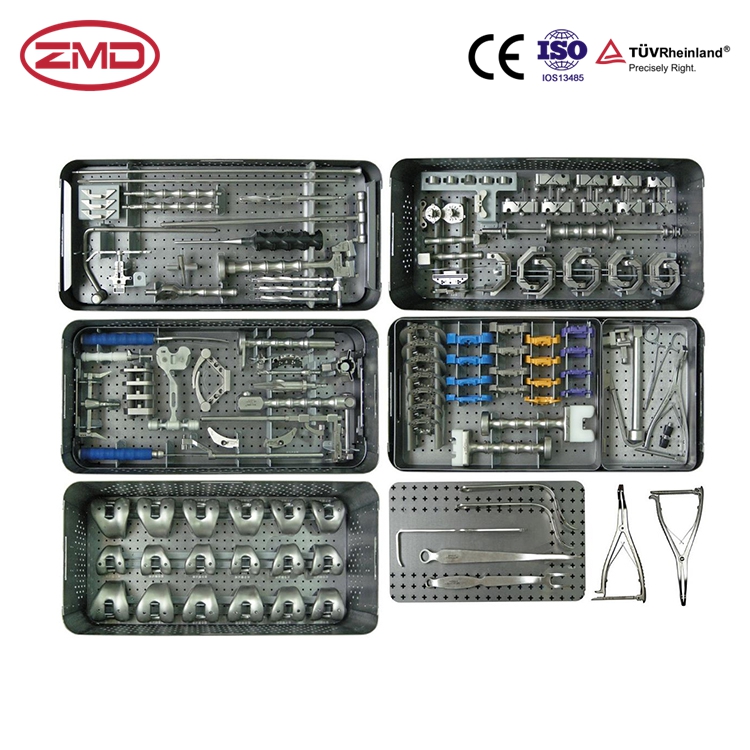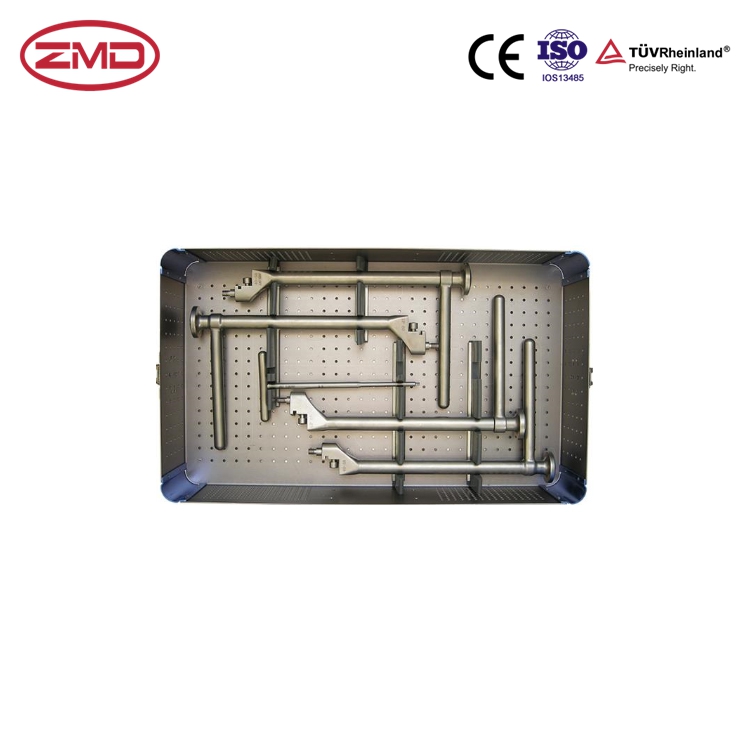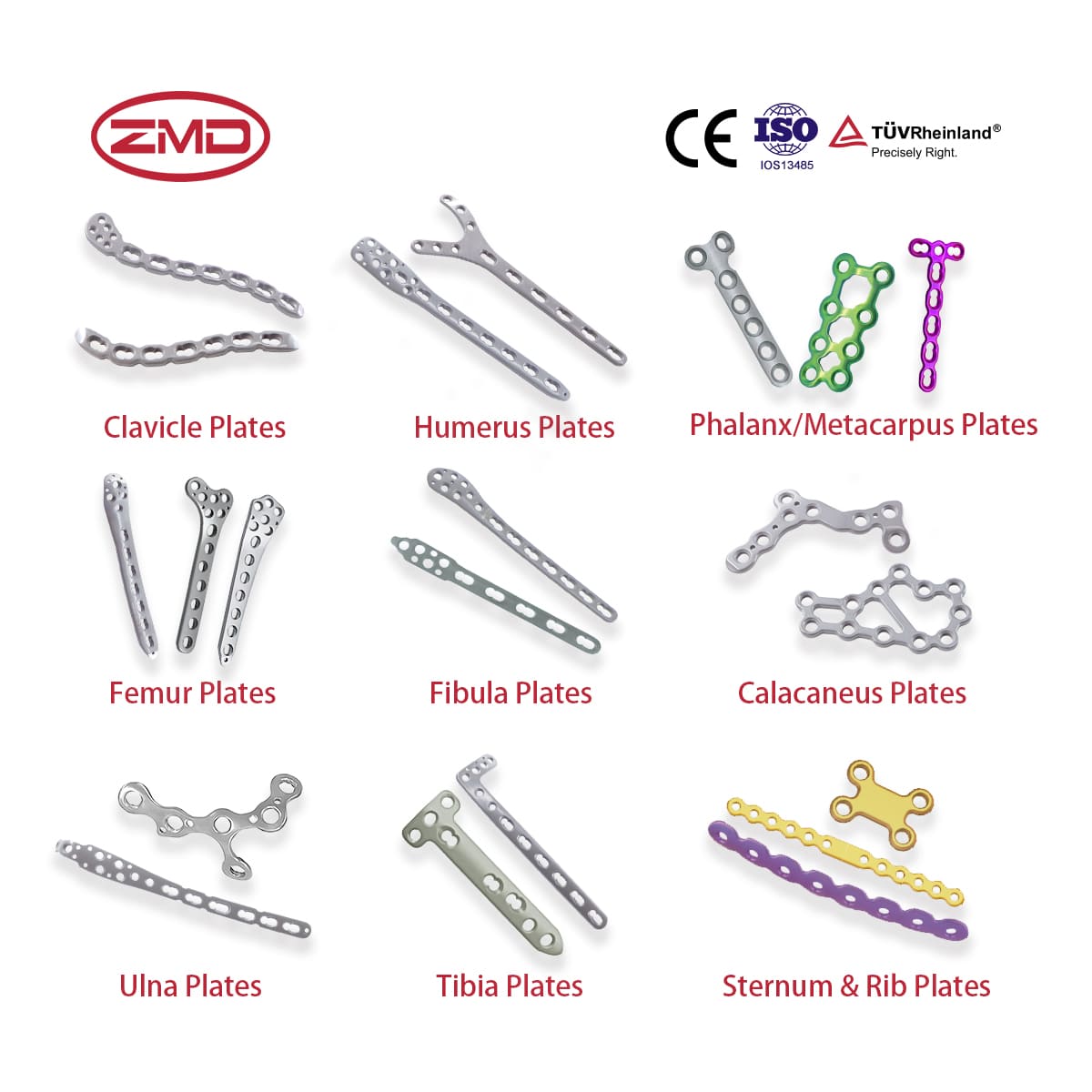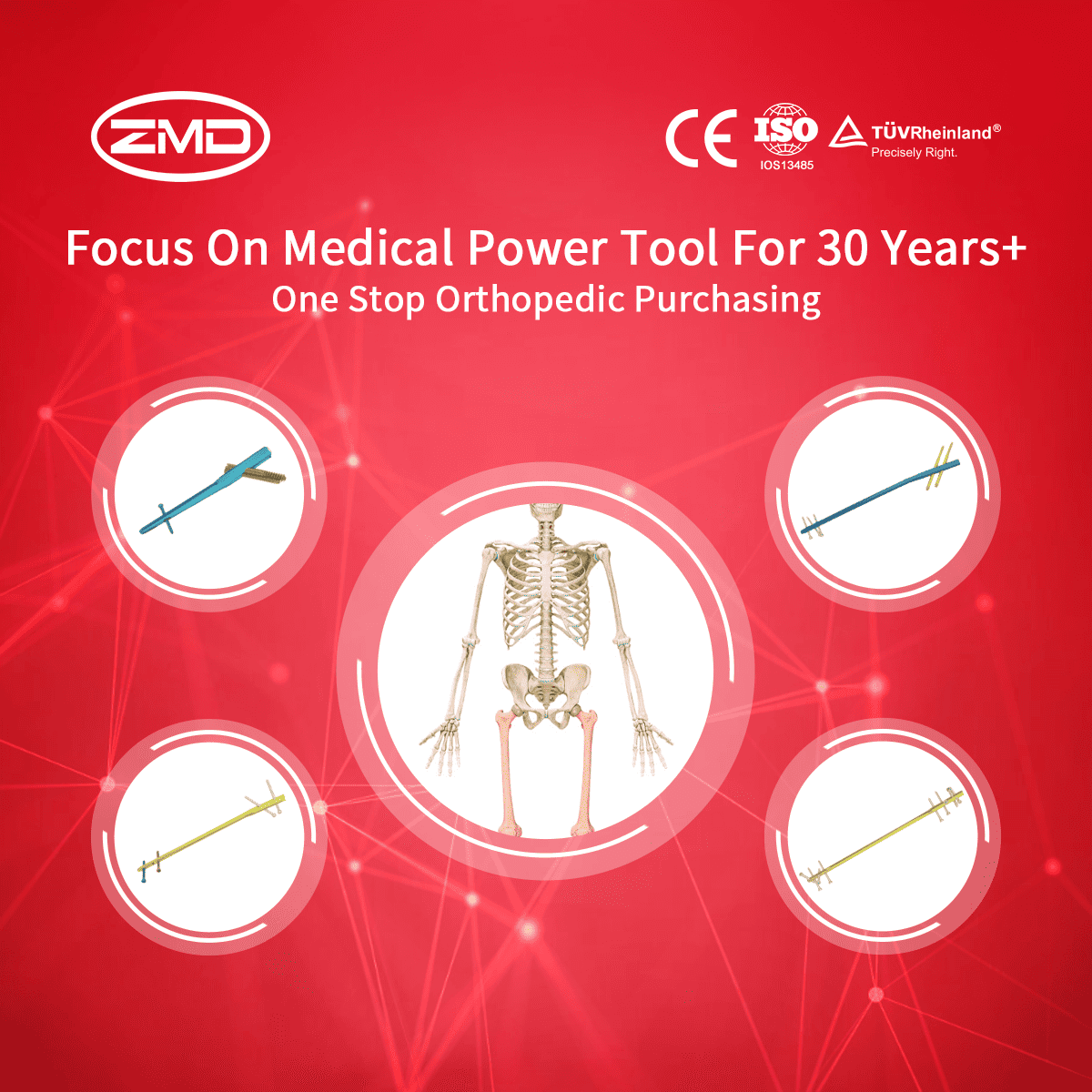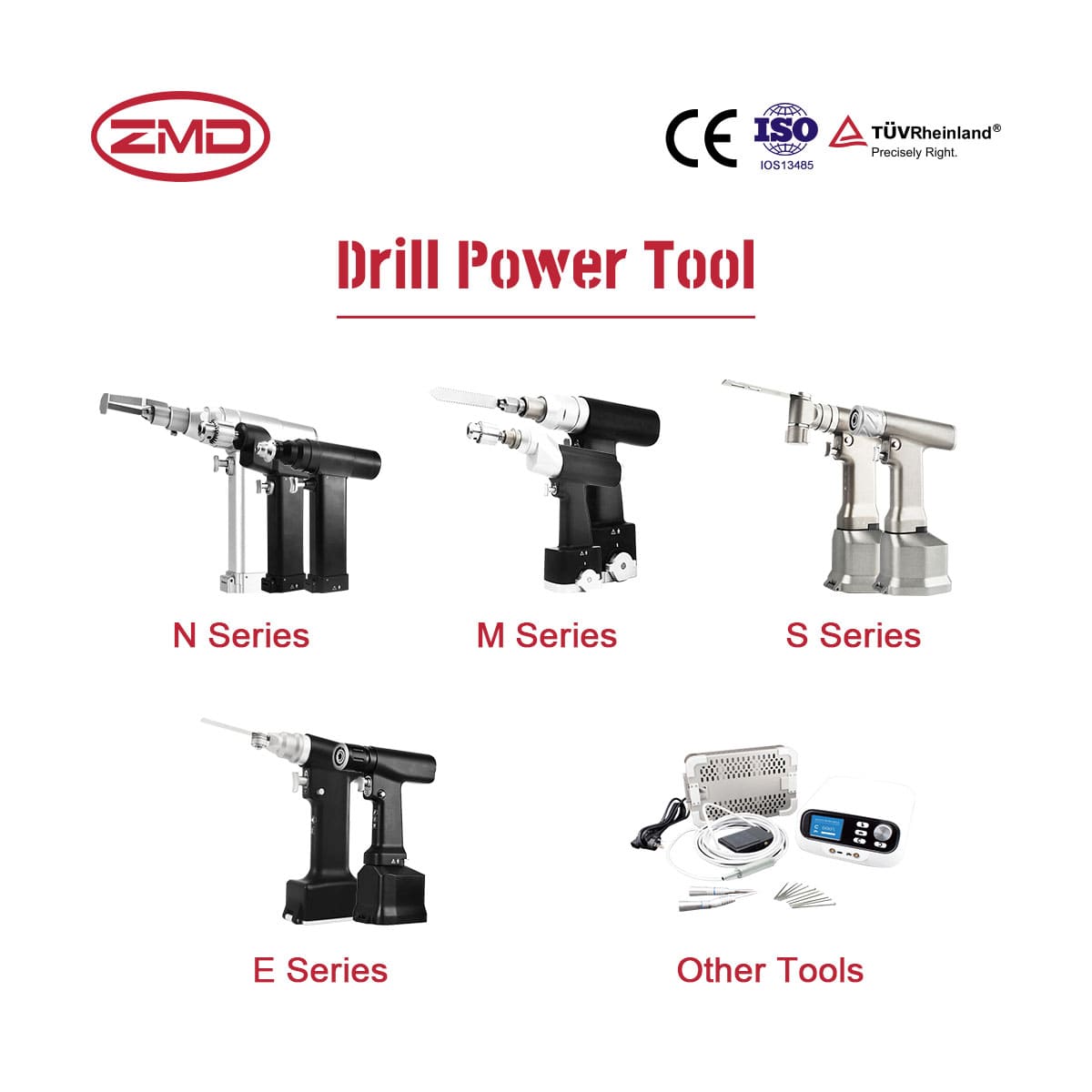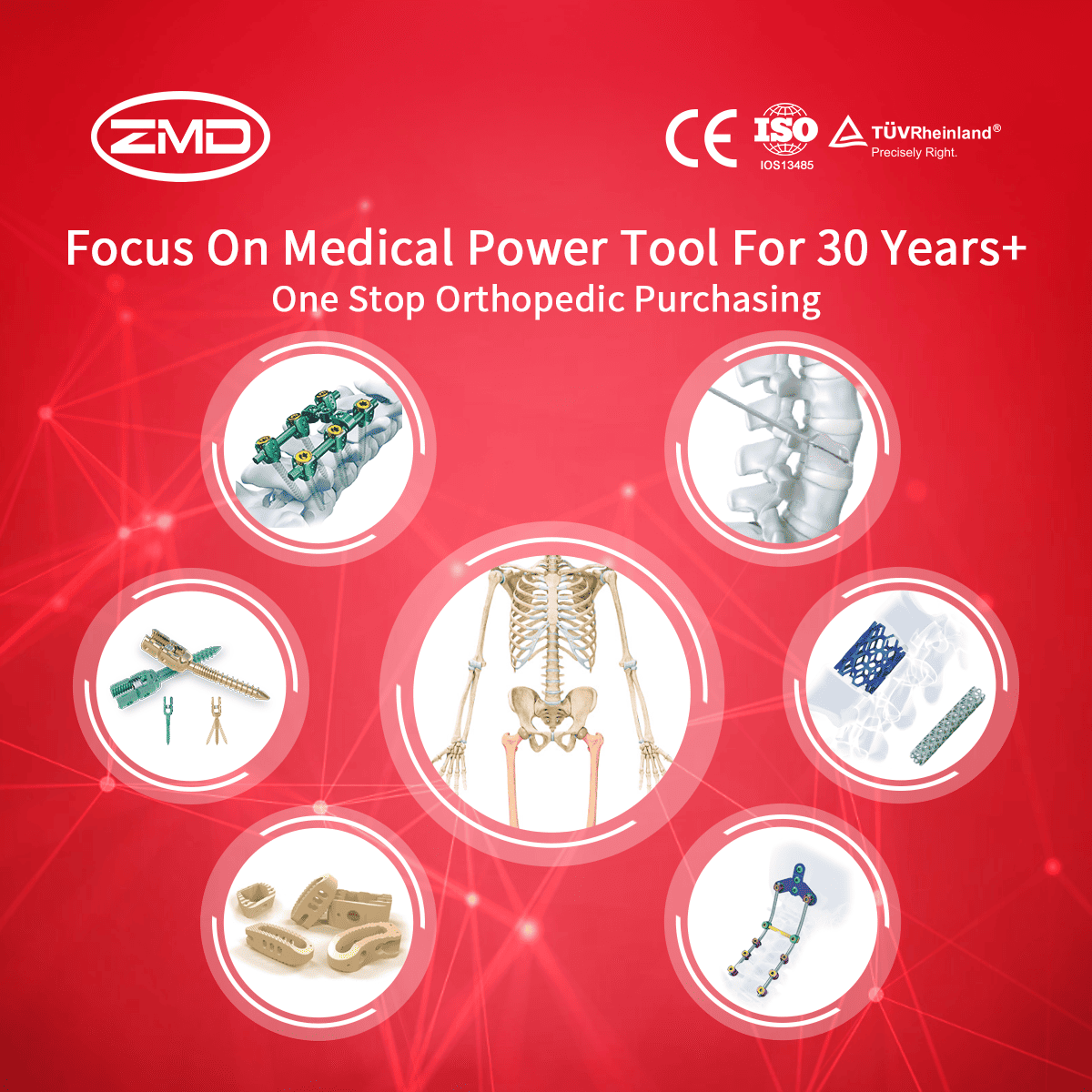Instrument Sets
ZMD
Orthopedic Products
Haven't been able to locate the product you're searching for yet?
If you're interested in more orthopaedic implant products, feel free to get in touch with our ZMD consultants.
What are Surgical Instrument Sets
Surgical instruments can be broadly classified into the following two main types
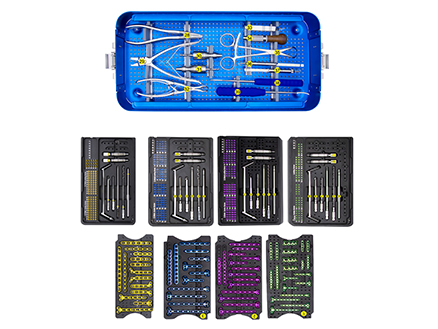
- Scalpels: These are the most basic and essential cutting tools. A scalpel consists of a handle and a sharp, replaceable blade. The blade comes in various shapes and sizes. For example, a #10 blade is a large, curved blade commonly used for making large incisions such as in abdominal surgeries. A #15 blade, on the other hand, is smaller and is often used for more delicate procedures like making incisions in the skin around the eyes. The sharpness of the scalpel allows surgeons to make precise cuts through different types of tissues with minimal trauma.
- Scissors: Surgical scissors are designed for cutting tissues and sutures. There are different types based on their shape and intended use. Straight scissors are useful for cutting sutures or for general tissue cutting in areas where access is not restricted. Curved scissors, like the Metzenbaum scissors, have a more rounded shape and are ideal for dissecting through soft tissues. Their curved design allows for better access in confined spaces and around curved anatomical structures. Mayo scissors are heavier and have a stronger cutting edge, which makes them suitable for cutting through tougher tissues such as fascia or ligaments.
- Rongeurs: These are used for cutting and nibbling away bone. For example, in spinal surgery, bone rongeurs are used to remove small fragments of bone or to shape the bone surface. They have a spring – loaded mechanism that allows the surgeon to apply controlled force to remove the desired amount of bone. There are different types of rongeurs, such as the Luer rongeur and the Kerrison rongeur, each designed for specific bone – cutting tasks depending on the location and nature of the surgical procedure.
- Bistouries: These are long, thin, and sharp – pointed knives. They are used mainly for making incisions in delicate tissues or for making fine – tipped cuts. In ophthalmic surgery, for example, a bistoury might be used to make an incision in the cornea or the conjunctiva. Their thin and pointed design allows for precise entry into the tissue without causing excessive damage.
- Forceps: There are many varieties of forceps. Adson forceps have fine tips and are used to grasp delicate tissues such as the skin edges during suturing. Tissue forceps, like the Allis forceps, have teeth that can firmly grip larger amounts of tissue. In a bowel resection surgery, Allis forceps are used to hold the bowel segments to prevent them from slipping during the procedure. Mosquito forceps are smaller and are used for more delicate grasping, such as clamping small blood vessels during hemostasis.
- Retractors: These are used to hold back tissues or organs to provide a clear view of the surgical field. The Balfour retractor is a self – retaining retractor commonly used in abdominal surgeries. It has adjustable blades that can hold back the abdominal wall and the intestines, allowing the surgeon to access deeper structures like the appendix or the gallbladder. Hand – held retractors, such as the Army – Navy retractor, are used in smaller procedures or when a self – retaining retractor is not necessary. They require an assistant to hold them in place and are useful for retracting tissues in a more controlled manner.
- Clamps: Hemostatic clamps are used to control bleeding by clamping blood vessels. The Bulldog clamp, for example, is a small, atraumatic clamp used to occlude small blood vessels. In vascular surgery, larger vascular clamps are used to temporarily stop the blood flow in major arteries or veins during procedures such as anastomosis. Non – hemostatic clamps, like towel clamps, are used to hold surgical drapes or other materials in place during the surgery to maintain a sterile environment.
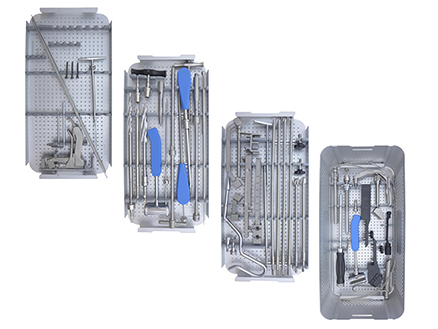
When Are Instrument Sets Needed?
Surgical instruments are essential tools for surgeons who perform a wide range of procedures on the human body. These instruments are designed for precision, control, and durability to ensure successful surgical outcomes. Surgical instruments are needed in various surgical specialties, including:
- General Surgery
- Abdominal Procedures: In laparotomy, a #10 scalpel blade makes the initial cut. Babcock forceps handle intestines. Balfour retractor holds back abdominal wall and organs for procedures like cholecystectomy.
- Herniorrhaphy: Different needles and sutures repair hernias. Forceps handle hernia sac and tissues for defect closure.
- Orthopedic Surgery
- Joint Replacements: Oscillating saw cuts bones in knee replacement. Orthopedic rasps shape, drills create holes for implants. Forceps and clamps hold tissues.
- Fracture Fixation: External fixators, bone plates, screws, and associated tools like drills, clamps, and forceps are used for fracture reduction and alignment in long-bone fractures.
- Neurosurgery
- Brain Surgeries: Micro-scalpels incise brain tissue. Jeweler’s forceps remove small tumors. Brain spatula retracts tissue in craniotomy.
- Spinal Surgeries: Spinal retractors expose column. Kerrison rongeur removes bone spurs. Screws and rods inserted after precision drilling for spinal fusion.
- Ophthalmic Surgery
- Cataract Surgery: Micro-forceps, micro-scissors, and phacoemulsification probe handle cataract lens. Intraocular lenses inserted precisely.
- Retinal Surgery: Delicate retinal forceps and scissors repair detachments. Specialized illumination aids the process.
- Plastic Surgery
- Cosmetic Surgeries: Rhinoplasty uses rasps, chisels, and fine instruments. Facelift uses skin hooks and retractors.
- Reconstructive Surgeries: Skin graft knives harvest skin. Microsurgical tools anastomose vessels for tissue grafts. Doppler probe assesses blood flow.
Blog
International Women’s Day: Salute to the “She – Power” at ZMD
International Women’s Day: Salute to the “She – Power” at ZMD Amid the trends of “Intelligent Medical Devices” and “Minimally Invasive Medical Technologies”, ZMD thrives
Discover Innovation with Sunan Medical at AAOS
Discover Innovation with Sunan Medical at AAOS The American Academy of Orthopaedic Surgeons (AAOS) Annual Meeting is the premier event for orthopedic professionals worldwide, offering
Visit Us at Expomed Eurasia 2025: Discover Sunan Medical’s Innovations
Visit Us at Expomed Eurasia 2025: Discover Sunan Medical’s Innovations The 32nd Expomed Eurasia, taking place from April 24-26, 2025, at the Tüyap Exhibition and



